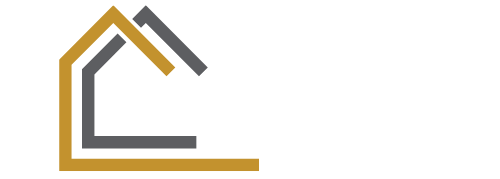Navigating the world of tenant disputes can be tricky for both landlords and renters. Conflicts often arise over issues like repairs, rent increases, or lease terms, leading to stress and misunderstandings. Knowing how to effectively resolve these disputes is crucial for maintaining a positive rental experience.
Tenant dispute resolution offers practical solutions that can save time and money. By understanding the rights and responsibilities of both parties, individuals can approach conflicts with confidence. This article explores various methods of resolution, from open communication to mediation, equipping readers with the tools they need to address disputes effectively.
Table of Contents
ToggleUnderstanding Tenant Dispute Resolution
Tenant dispute resolution refers to various methods for addressing conflicts between landlords and renters. It focuses on effective communication, prompt action, and adherence to legal rights and responsibilities.
Common Types of Disputes
- Repairs: Issues arise when maintenance falls short. Tenants may report leaking faucets or broken heaters, while landlords must ensure timely fixes.
- Rent Increases: Disagreements can occur over unexpected rent hikes. Notices provided by landlords must follow local regulations.
- Lease Terms: Conflicts may arise from lease term interpretations. Clarity is vital for both parties to avoid misunderstandings.
Resolution Methods
- Open Communication: Clear dialogue fosters understanding. Discussing concerns directly often leads to swift resolutions.
- Mediation: An impartial third party can facilitate negotiations. Mediation often results in mutually agreeable solutions without escalating to formal disputes.
- Legal Action: Using the legal system serves as a last resort. Small claims courts can adjudicate disputes, but this process may involve costs and time delays.
Importance of Documented Agreements
Maintaining accurate records proves essential during disagreements. Written notifications, repair requests, and lease agreements serve as evidence, protecting both parties’ interests.
Utilizing Local Resources
Various organizations provide assistance in tenant dispute resolution. Local housing agencies or tenant unions often offer support, resources, and advocacy. Engaging these resources ensures informed decision-making.
By understanding available dispute resolution methods, both landlords and tenants can effectively manage conflicts and maintain positive rental relationships.
Common Types of Tenant Disputes


Tenant disputes can arise from various issues, creating tension between landlords and renters. Understanding these common disputes can help facilitate effective resolution.
Non-Payment of Rent
Non-payment of rent ranks as one of the most frequent disputes. Renters may face financial hardships, causing late or missed payments. Landlords often rely on timely payments to cover property expenses. Open communication about financial difficulties can lead to payment plans or temporary concessions. Rental agreements typically outline penalties for late payment. In some cases, landlords may initiate eviction proceedings if payment issues persist.
Maintenance Issues
Maintenance issues present a significant area for disputes between tenants and landlords. Tenants expect properties to remain habitable, complying with local health and safety codes. Common complaints include heating failures, plumbing leaks, and insect infestations. Landlords are responsible for timely repairs to maintain the rental property’s condition. Clear documentation of repair requests and responses is critical during disputes. If landlords disregard maintenance needs, tenants may pursue legal remedies or withhold rent.
Lease Violations
Lease violations encompass a variety of behaviors that contradict the terms of the rental agreement. Common violations include unauthorized pets, excessive noise, or subletting without permission. Landlords typically address these violations with warnings or eviction notices. Tenants should be aware of their rights regarding lease terms and any applicable local laws. Thorough understanding of lease agreements helps both parties navigate potential conflicts and seek resolution more effectively.
Methods for Resolving Tenant Disputes
Various methods exist for addressing tenant disputes effectively. These methods include mediation, arbitration, and legal action, each offering different strategies for conflict resolution.
Mediation
Mediation involves a neutral third party assisting both landlords and tenants in reaching an agreement. This process allows for open dialogue, where both parties can express their concerns. Mediators facilitate discussions, helping clarify misunderstandings and propose viable solutions. Successful mediation often results in a written agreement that both parties uphold. This method is typically faster and less costly than legal proceedings, promoting a collaborative approach.
Arbitration
Arbitration provides a more formal dispute resolution process where an arbitrator reviews the case and makes a binding decision. This method usually follows specific rules outlined in the rental agreement or state laws. Both parties present their evidence and arguments, allowing the arbitrator to assess the situation impartially. Arbitration can resolve disputes relatively quickly, often yielding a decision within weeks. However, it limits the ability to appeal the arbitrator’s decisions, making it essential for parties to carefully consider this option.
Legal Action
Legal action serves as a last resort for resolving tenant disputes. When other methods fail, parties can resort to local courts to adjudicate the matter. Legal action typically involves filing a lawsuit, which can be time-consuming and expensive. Courts assess the evidence presented, applicable laws, and rental agreements to deliver a judgment. While this method can enforce rights and provide resolution, it may strain relationships between landlords and tenants and lead to unnecessary financial burdens.
Best Practices for Tenants and Landlords
Tenants and landlords can follow several best practices to prevent and resolve disputes effectively.
Clear Communication
- Communicate clearly from the start. Both parties should discuss expectations regarding rent payment, maintenance, and lease terms.
- Use written communication to document important conversations. This method provides a record for future reference if disputes arise.
Timely Action
- Address issues promptly. Tenants should report maintenance problems quickly, while landlords should respond to requests for repairs without delay.
- Take proactive steps to resolve disputes as they happen. Early intervention can prevent escalation.
Document Everything
- Keep thorough records. Tenants should save copies of leases, correspondence, and payment receipts. Landlords should maintain records of maintenance requests and responses.
- Document conditions of the property at move-in and move-out. Use photos or written notes to avoid misunderstandings.
Understand Rights and Responsibilities
- Familiarize oneself with local rental laws. Both parties must understand their legal rights and responsibilities to navigate disputes effectively.
- Consult legal resources or housing agencies for guidance when needed. This step ensures informed decision-making.
Use Mediation
- Consider mediation as a first step in conflict resolution. An impartial mediator can facilitate discussions and help both parties reach a mutually beneficial agreement.
- Aim for a written agreement post-mediation. This document helps enforce the terms both parties have committed to.
Engage Local Resources
- Utilize local tenant unions and housing agencies for support. These organizations provide resources and assistance in resolving disputes.
- Participate in community workshops or seminars focused on tenant rights and responsibilities. Education can empower both sides to address issues more effectively.




